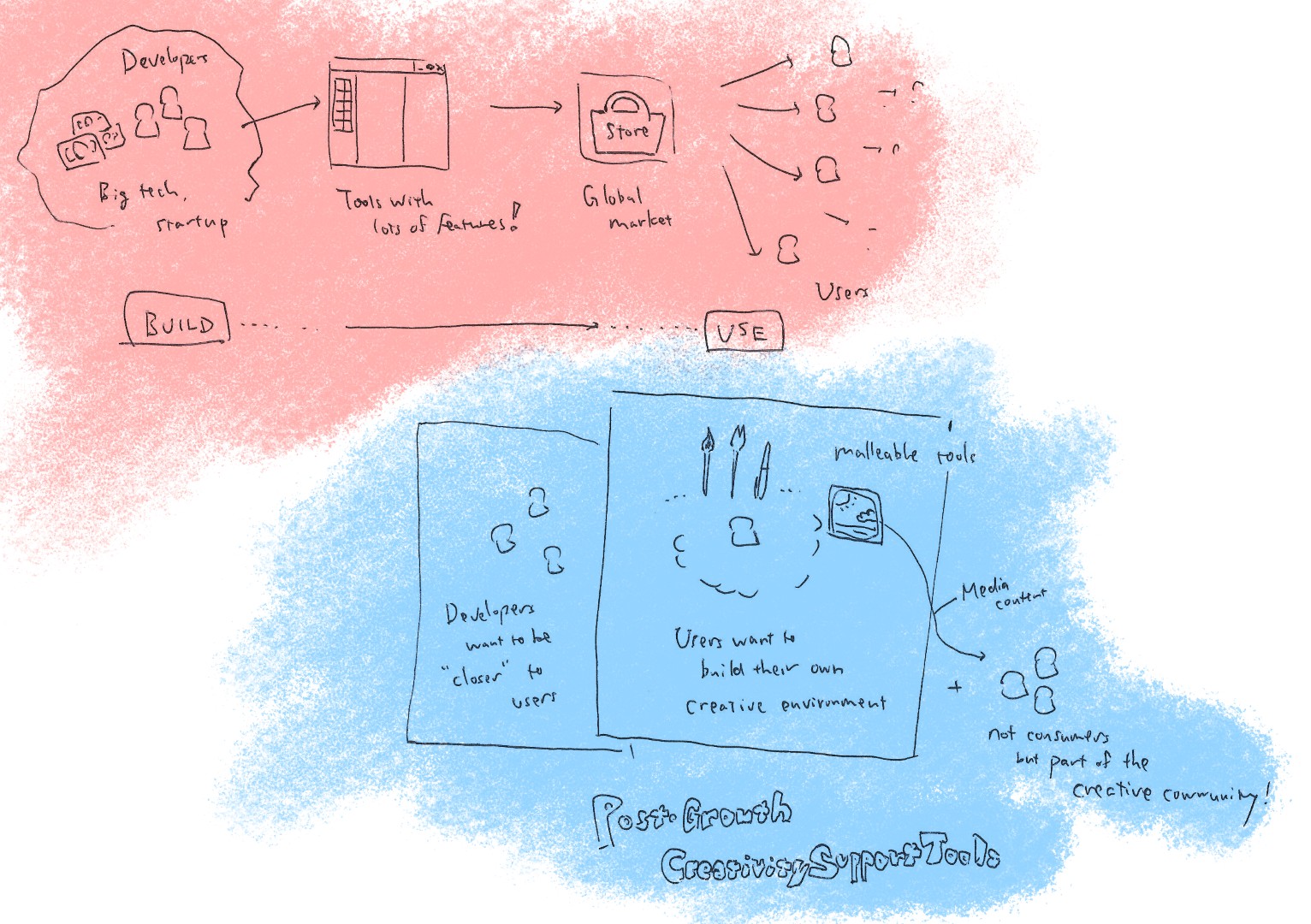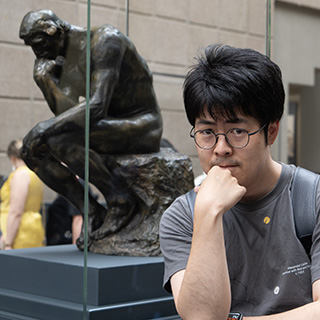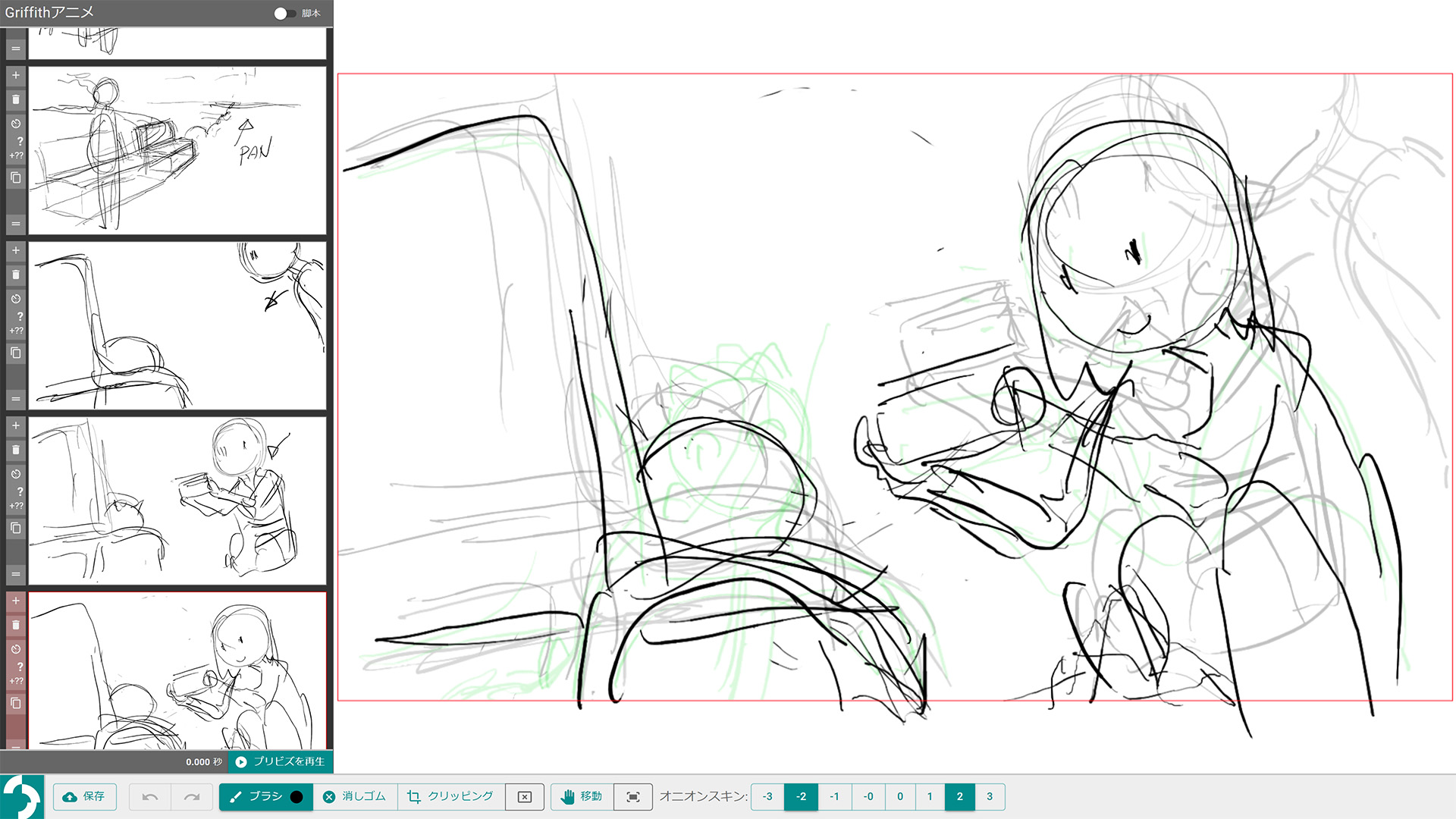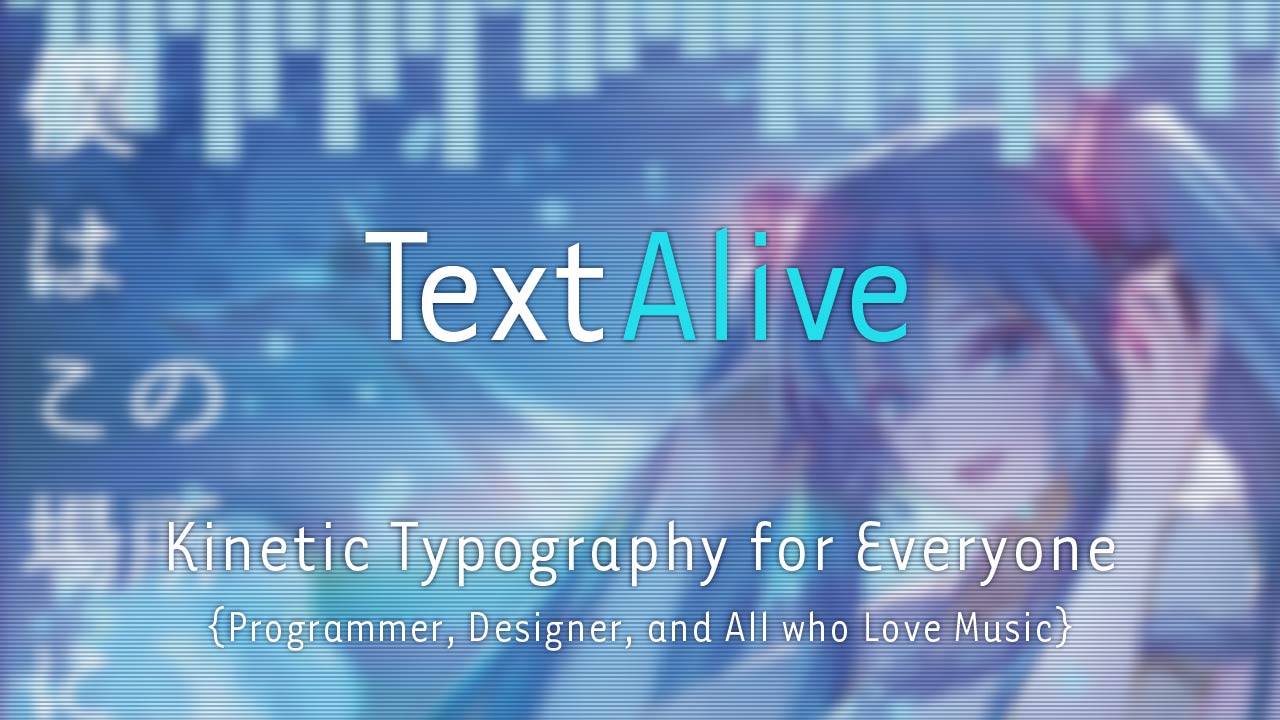Creativity Support Environments
Summary
To realize a creative society in which people want to create content with the help of AI technologies, a sustainable ecosystem in which content inspires the next creation serves a critical role.
I shed light on the creative culture in such an ecosystem, build a "creativity support environment (CSE)" that supports the content creation and distribution process, and aim to establish Human-Computer Interaction (HCI) technologies that engineer, nurture, and maintain the creative culture.

Example projects
I have worked on the following projects collaborating with creators and companies in the creative industries.
Griffith is a web-based authoring tool for Japanese animation (anime) storyboards.
An integrated design environment for kinetic typography; desktop app revamped as a web service in 2015.
We propose a "lyric app," a novel media format of interactive lyric-driven visual art. We developed a framework to support its development, collected 52 examples in the wild, and gained insights into the future of creative culture and the intersection of music and programming.
Anime SIG: Researching Japanese Animation From Technical, Cultural, and Industrial Perspectives
Organized by experts from industry and academia, this CHI 2025 Special Interest Group invited participants to the emerging area of anime research and aims to open up a new alley for human-computer interaction (HCI) research. Please refer to the event page for more details.
Power, Culture, and Sustainability in Creativity Support Tools: A Post-growth Perspective
A workshop with focus on post-growth HCI was held as part of the CHI 2025 conference. I presented a position paper on the topic of how creativity support tools should be designed and maintained in the post-growth era.

Special Interest Group on Creativity and Cultures in Computing (SIGCCC)
With the help of the researchers working on creativity support whom I respect and admire, a Special Interest Group meeting was held at ACM CHI 2023. Please refer to the event page for more details.
On the Relationship between HCI Researchers and Creators— or How I Became a Toolsmith
XRDS is the ACM's quarterly magazine for students. As part of its featured edition exploring the horizon of computation for creativity, I contributed an article that discusses the importance of helping creative activities "in the wild," reflecting my research experience.
 Top page
Top page

